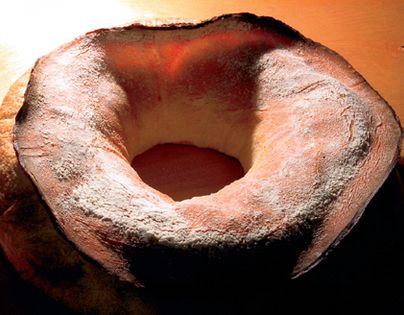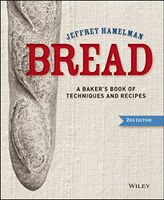Advertisement

Preparation info
- Dough Yield: About
31
loaves at 1 lb , 2 oz - Difficulty
Medium
Appears in
Published 2004
Ciabatta is a Bread that America has Learned to love dearly. Its domestic popularity rose quickly after it was chosen as one of the five breads that were baked in 1996 in Paris, at the Coupe du Monde de la Boulangerie, the World Cup of Baking. The exceptional quality of the ciabatta helped earn the United States first prize for breads at that memorable competition.
Ciabatta dough is unique in many ways: First, it is a very wet and sticky dough, with often upwards of 80 percent or ev


